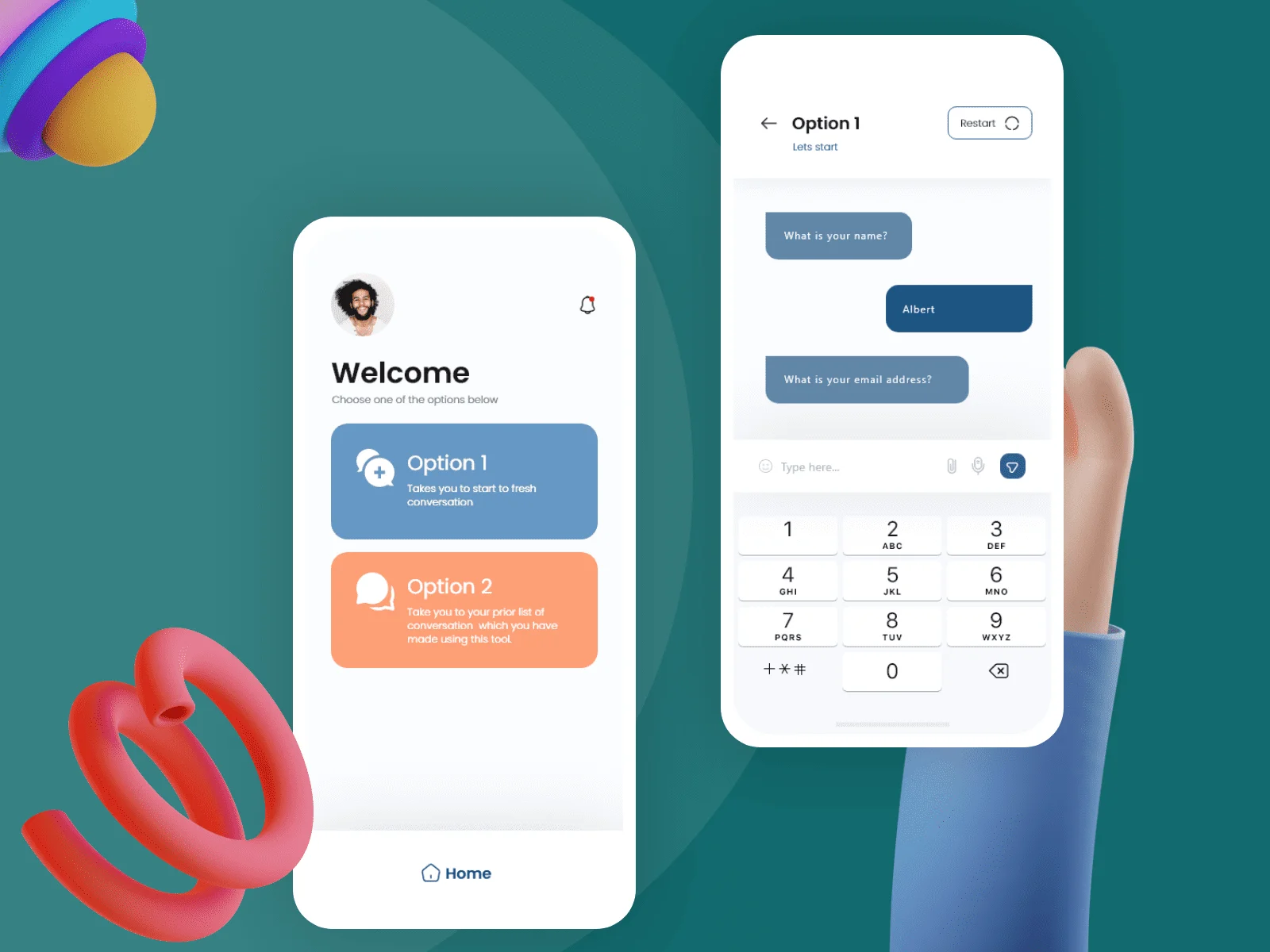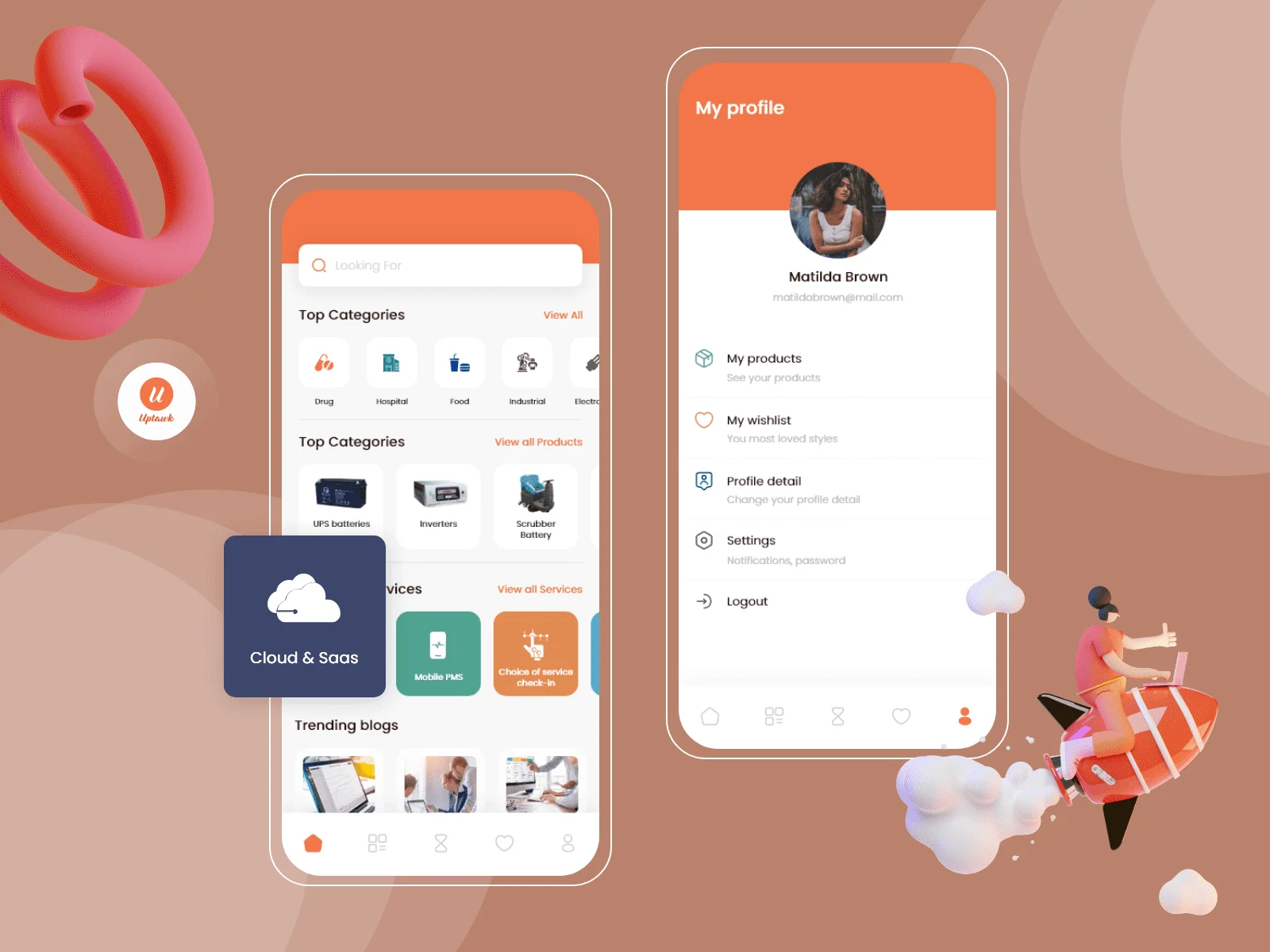IoT Email benefits and security risks
The Intersection of IoT and Email SecurityThe integration of IoT devices into the business landscape has brought significant advancements in automation, efficiency, and data collection. That’s why more than 50% of organizations across the globe are currently using this technology, and 33% are planning to adopt it within the next two years.However, the widespread use of IoT has also introduced new challenges, especially when it comes to email security. As IoT devices increasingly rely on emails for notifications, alerts, and updates, they can expand the system's attack surface, making it vulnerable to cyberattacks. This concern is particularly significant because 90% of cyberattacks are carried out through emails.Therefore, understanding and addressing these vulnerabilities is critically important to minimize security risks your business may fall victim to. Not only will it allow you to prevent financial and data losses but it can also help you ensure regulatory compliance.In this detailed guide, we’ll discuss potential email security vulnerabilities within IoT environments and outline best practices to mitigate them.A.) Why Ensuring Email Security within IoT Environments is Important?IoT stands for “Internet of Things” and it refers to a network of interconnected devices equipped with sensors and software to collect and exchange data. In a typical IoT environment, a wide range of devices communicate with each other and with a centralized system over the internet, which can be through emails.When IoT devices are integrated into an organization's network, they gain access to and process sensitive data to perform critical business operations. Without proper email security measures, an IoT ecosystem becomes vulnerable to different types of cyberattacks.Here are some key reasons why email security in IoT environments is critical:Data Privacy: IoT devices connected to an organizational network collect sensitive business information and user data. If email communication between these devices and their associated systems is compromised, it can lead to unauthorized access to sensitive information, risking data privacy.Device Control: Modern IoT devices can be controlled/managed remotely using email commands. If these emails are intercepted or manipulated, cybercriminals can gain unauthorized control over the IoT system to cause damage to your business.Network Security: Usually, multiple IoT devices are connected to the same network infrastructure as other critical systems within an organization. Attackers can exploit compromised email communications from these devices as an entry point to infiltrate the network and launch further attacks.Integrity of Operations: Emails can be used for sending important business updates, notifications, and alerts from IoT devices. If these communications are tampered with, it can lead to misinformation, disruption of operations, or failure to respond appropriately to critical events.Compliance Requirements: Many industries have strict regulatory requirements regarding the security and privacy of data. Ensuring secure email communication over IoT devices can help you make sure that your organizations comply with these regulations, such as HIPAA and GDPR, and avoid legal consequences.B.) Email Security Vulnerabilities in IoT EnvironmentsLet’s discuss the specific vulnerabilities that can emerge when email communication intersects with IoT technology.1. Insecure Configurations on IoT DevicesMany IoT devices come with default usernames and passwords, which are weak and easily guessable. For example:Username = “admin”Password = “1234” or “password”If not changed, cybercriminals can easily exploit these credentials to gain unauthorized access to the system. It’ll allow them to access sensitive data from emails sent to/via an IoT device.Poorly implemented email security features can also make IoT devices vulnerable to different types of security risks. For instance, insufficient validation of SSL certificates and improper handling of email headers can expose these devices to spoofing attacks.Additionally, IoT devices, especially older models, can also be running on basic and unsecured communication protocols like SMTP, IMAP, and POP3. Without proper encryption, these protocols will make it easier for attackers to intercept and read email communications.2. Weak Encryption StandardsIf an IoT device carries out email communication in plaintext, sensitive information like business and user data can be intercepted by attackers through MITM (Man-in-the-Middle) attacks. That’s why it’s important to use encryption algorithms to turn plaintext into unreadable ciphertext. It ensures that even if the data is intercepted, it cannot be understood without the decryption key.However, it’s also equally important to use advanced encryption protocols. That’s because modern-day computing power equipped with artificial intelligence and machine learning can easily break outdated/weak encryption protocols.Important Note: Implementing encryption in an IoT environment is complex due to the large number of endpoints, which increases the attack surface. This complexity makes IoT emails particularly vulnerable to cyberattacks and it can result in unauthorized access to confidential business data.3. Vulnerable Email Clients and FirmwareEmail clients and firmware in IoT devices can introduce vulnerabilities if not properly secured. Many IoT devices come with lightweight email clients that lack robust security features, making them easy targets for cybercriminals. It allows them to execute malicious code for unauthorized access and/or manipulate email content for data compromise.Similarly, outdated or poorly maintained firmware in IoT devices can create security gaps that attackers can also exploit. That’s why firmware updates are crucial for patching known vulnerabilities and strengthening the security posture of IoT devices.4. Exploitation of IoT Device FeaturesMany IoT devices are designed to autonomously respond to triggers and commands they receive via email. While this functionality enhances convenience and efficiency, it can also introduce risks if not secured properly.For instance, a smart security camera configured to send footage upon request via email can disclose sensitive information if accessed by unauthorized parties.Additionally, IoT devices can also have remote access capabilities, which allow users to monitor and control them from different locations via the internet. This feature also offers convenience but can be exploited as well.For example, a network-connected device with remote access functionality can be targeted by cybercriminals to disrupt business operations or steal sensitive data.5. Weak Email FilteringMost IoT devices typically don’t have robust malware and spam filtering capabilities and security controls to identify and block malicious emails effectively.It makes it easier for cybercriminals to launch phishing emails or malware-laden messages directly to the device to hack them. It can lead to compromised devices and potential security breaches.6. Social Engineering and Phishing AttacksSocial engineering and phishing attacks pose significant threats to email security in IoT environments. Malicious online actors use these tactics to manipulate individuals to reveal sensitive information or perform actions that compromise security.For example, an attacker can use an IoT device as a proxy and start generating fake emails. They deceive recipients by crafting emails that appear to come from trusted sources, such as colleagues, service providers, or IoT device manufacturers.Additionally, attackers utilize tactics like urgency or fear to make recipients take immediate action, like clicking on a link or opening an attachment. Once recipients interact with these malicious elements, they unknowingly reveal login credentials, and sensitive information, or enable malware to infect their devices.As a result, the attackers gain unauthorized access to systems or compromise the security of IoT devices. It can lead to data breaches, operational disruptions, and financial losses for businesses.7. IoT Email Delivery ChallengesWhile not exactly a security concern, the reliability of email delivery in IoT environments is still critical. That’s because it makes sure that important notifications and alerts from connected devices are received timely.In an IoT ecosystem, multiple devices are connected and send emails as needed. However, not all emails are received due to connectivity issues, network congestion, server downtime, incorrect email configurations, or limitations in the device's email-handling capabilities.Such issues can lead to missed notifications or alerts from connected devices, which results in reduced performance. Additionally, it can also prove to be costly for organizations whose entire operations rely on these devices.C.) Best Practices to Ensure Email Security in an IoT EnvironmentConsider using the following best practices to ensure email security in IoT environments.a.) Keep Everything UpdatedRegular software and firmware updates are essential to ensuring email security in an IoT environment. These updates usually come with patches for security vulnerabilities that are discovered in the device's software.Doing so will allow you to address known security flaws in your IoT devices and improve their defenses against potential cyber threats. Not only will it minimize the risk of unauthorized access to email communication but it’ll also enhance the overall security posture of your IoT ecosystem.Additionally, software and firmware updates can also contain new security features and improvements to further improve the device's resilience to emerging threats.b.) Use Strong Authentication MechanismsStrong authentication mechanisms are also important for ensuring email security in an IoT environment. It includes using unique and strong passwords for accessing IoT devices and associated email accounts.Ideally, all passwords should consist of a combination of letters, numbers, and special characters to increase complexity and resist brute-force attacks.Additionally, you should enable MFA (Multi-Factor Authentication) to add an extra layer of security. It’ll require all users to provide a second form of verification, such as a code sent to their mobile device, in addition to their password.It’ll also help you prevent unauthorized access to email communications and significantly reduce the risk of security breaches.c.) Utilize the Power of Network SegmentationNetwork segmentation refers to the practice of isolating IoT devices on separate networks to limit their exposure to potential security threats. By segregating IoT devices from other critical systems and applications, you can contain any security breaches that might occur within the IoT environment.It’s one of the best ways to prevent unauthorized access to sensitive business data transferred via email. Additionally, network segmentation also allows for more granular control over traffic flows. It enables you to enforce stricter security policies tailored to the specific requirements of your IoT environment.d.) Implement EncryptionEncrypting your IoT email communications allows you to maintain the confidentiality and integrity of the data being transmitted. It’s important to use modern encryption protocols such as SSL, TLS, and STARTTLS.These protocols are hard to break and they encrypt email data to make it unreadable to anyone intercepting the communication.In addition to encrypting email traffic, using VPNs (Virtual Private Networks) with IoT devices can further enhance security. VPNs create a secure, encrypted connection between IoT devices and email servers, regardless of the network they are connected to.They also mitigate the risk of interception and unauthorized access to email communications. Make sure that you opt for a reliable VPN service, such as NordVPN and Surfshark VPN, to keep your email communications secure and confidential.e.) Use Robust Email Authentication StandardsModern email authentication standards, such as DMARC, SPF, and DKIM are designed to enhance email security. DMARC allows you to specify policies for handling emails that fail authentication checks. It provides insight into email traffic to protect against phishing and spoofing attempts.Whereas SPF allows you to specify which IP addresses are authorized to send emails on behalf of their domain, which prevents unauthorized senders from spoofing legitimate domains.DKIM is used to add a layer of security, as it allows senders to digitally sign emails with cryptographic signatures. It can be verified by recipients to ensure the integrity and authenticity of the message.For expert guidance and consultation on email compliance, consider reaching out to weDMARC, where you can access valuable insights and assistance from industry professionals.f.) Educate Your StaffOne of the most effective ways to secure your email communication in an IoT environment is to educate your staff about the latest security threats. You can conduct workshops and training programs to help your teams recognize potential security risks, adopt secure email practices, and respond to cyber threats the right way.Training sessions can cover different topics like identifying phishing emails, avoiding suspicious email attachments or links, creating strong and unique passwords, and understanding the importance of email encryption and authentication.This way you can keep your staff vigilant against evolving cyber threats and minimize the risk of email-related security incidents.g.) Utilize the Services of a Trusted IoT Solution ProviderIf you're looking for IoT development services, make sure that you opt for the expertise of a reliable provider. A trusted IoT development partner will bring invaluable experience and proficiency in creating secure solutions designed specifically for your business’s needs.When selecting an IoT development provider, prioritize these factors:Proven track record of delivering secure and reliable IoT solutionsCompliance with security standards and protocolsRobust testing and validation processesCommitment to ongoing support and maintenanceA reliable and experienced partner will ensure that your IoT infrastructure remains secure, resilient, and aligned with your business objectives.D.) Final WordsSecuring email communication within IoT environments is critical for protecting sensitive business data and mitigating cybersecurity risks. We hope this guide has helped you understand the security vulnerabilities that can arise in IoT email communication and the best practices to address them effectively.Lastly, if you’re planning to develop an IoT system with email capability, make sure that you partner up with a reliable and trustworthy service provider. It’ll ensure that your project is in capable hands, with experts who understand the importance of IoT-enables email security to protect your data.Also, for comprehensive email compliance solutions and tools, consider leveraging YourDMARC's SaaS platform, providing access to a suite of tools and reports for email compliance management within your IoT infrastructure for enhanced protection and compliance. Consider exploring Software Outsourcing Journal's platform and directory as well. They provide objective reviews and all necessary information about top software outsourcing company, offering robust SaaS platforms designed to manage email compliance seamlessly within IoT infrastructures, enhancing both protection and regulatory adherence.
Read More










.png)





















